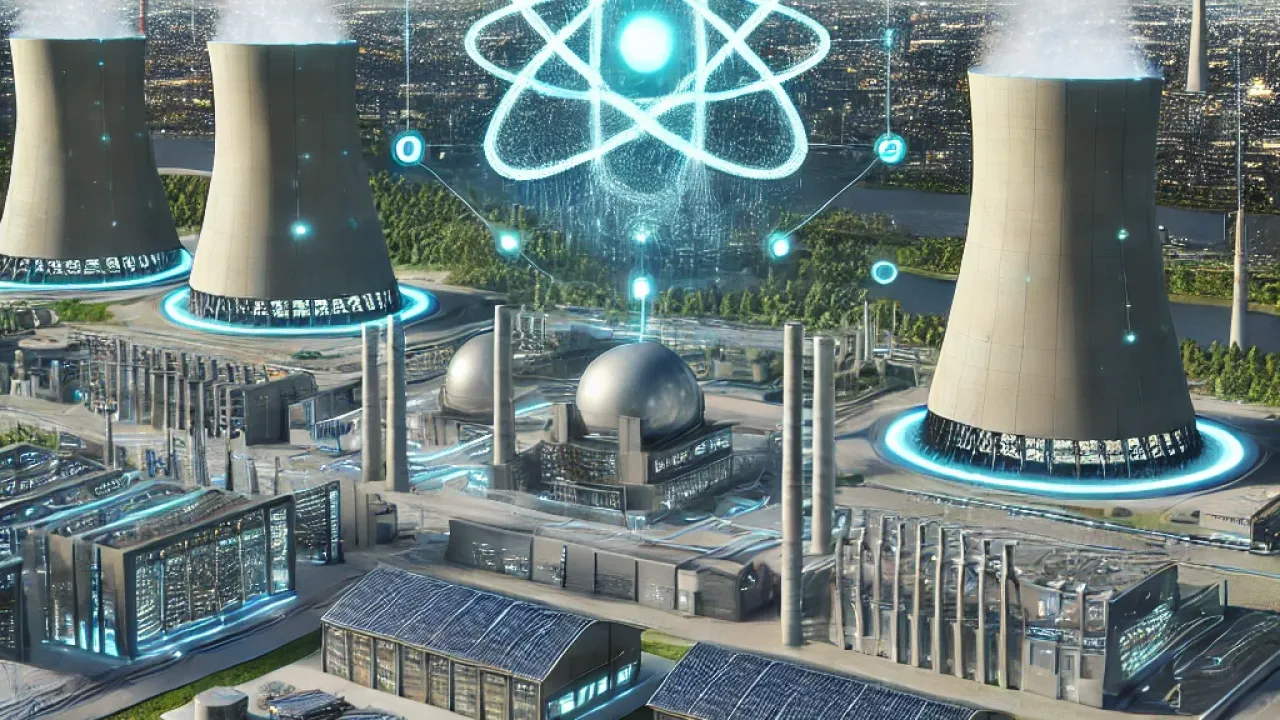Artificial intelligence (AI) is reshaping industries globally, and one of the most forward-thinking developments involves tech giants investing in nuclear power plants to fuel their AI operations. Google has recently made headlines by partnering with nuclear startup Kairos Power, aiming to deliver 500 MW of carbon-free electricity to the U.S. power grid. The first deliveries of energy are expected by 2030, with full deployment anticipated by 2035. This significant move is part of Google’s strategy to secure a reliable, clean energy source to meet the growing demands of its AI-powered data centers.
Google’s investment highlights the increasing need for sustainable, scalable energy solutions as AI and machine learning technologies evolve. As AI requires immense computational power, tech companies are turning to energy sources that can provide consistent, high-output power. Nuclear energy, specifically small modular reactors (SMRs), has emerged as a potential solution. These reactors are smaller, more flexible, and easier to deploy than traditional nuclear plants, making them an attractive option for powering the vast data centers needed to support AI.
Other tech giants are following suit. For example, Oracle recently announced plans to build three SMRs to supply at least one gigawatt of power for its AI data centers, and Microsoft is investing $1.6 billion to restart the Three Mile Island nuclear reactor, which will generate over 800 MW. These investments reflect a broader trend in the tech industry, where companies are securing energy independence and aiming for greener solutions to meet the growing power demands of their operations TOM's Hardware.
The acquisition of nuclear power plants aligns with these companies’ sustainability goals. Google, for instance, is working toward achieving net-zero carbon emissions by 2030, and this move will play a crucial role in reaching that target. The energy produced by these reactors will not only power AI data centers but will also support the tech industry’s transition to clean energy, reducing reliance on fossil fuels and promoting energy efficiency.
AI’s role in advancing energy solutions is also becoming more prominent. AI is already optimizing renewable energy production and grid management, helping predict energy demand and improving storage systems to balance supply. The integration of AI and nuclear power in energy infrastructure has the potential to create a more reliable, sustainable, and scalable energy ecosystem. As the AI boom continues, companies investing in both cutting-edge technology and clean energy solutions are positioning themselves to lead in both the technological and environmental spaces.
For those looking to explore this rapidly evolving field, there are vast opportunities to innovate. Whether you’re interested in AI-driven energy grid optimization, predictive maintenance for nuclear plants, or renewable energy innovations, the future of AI and energy is a space where technology and sustainability intersect.
